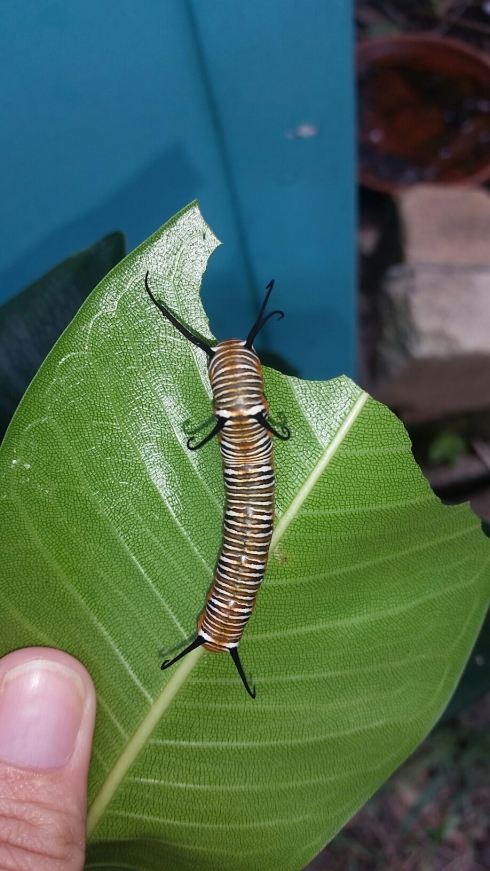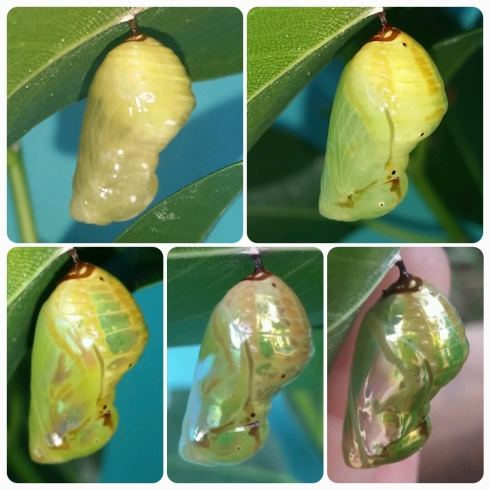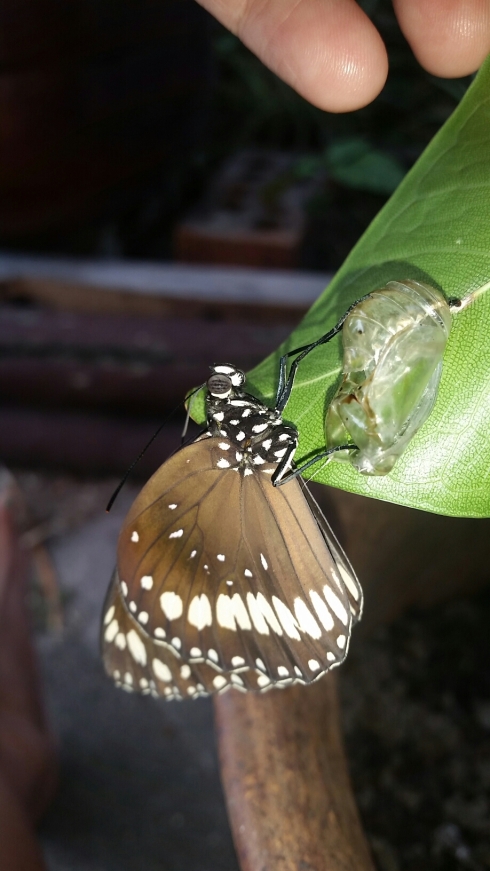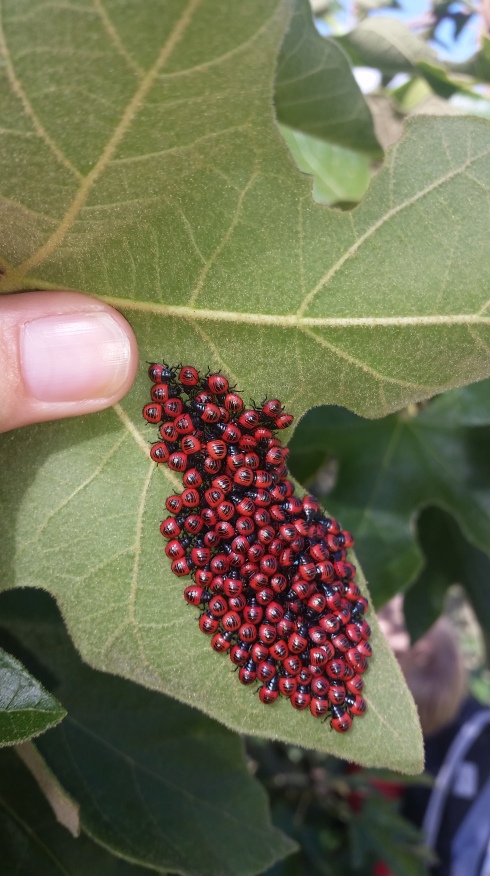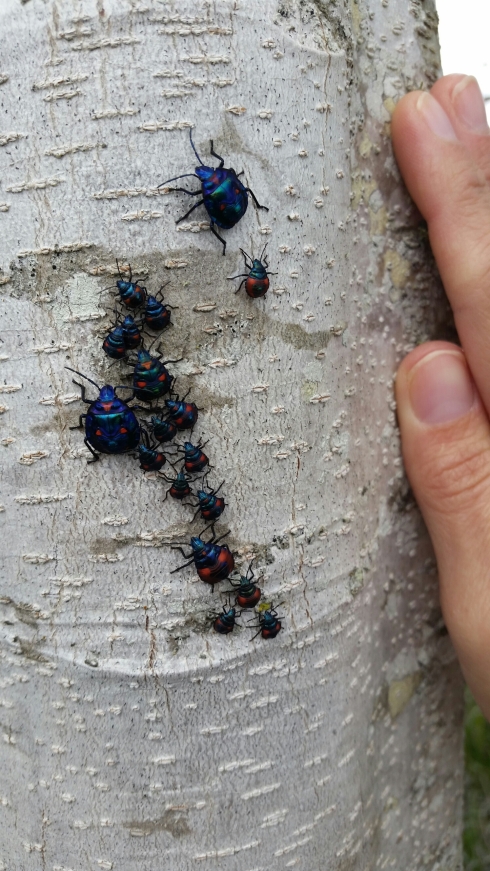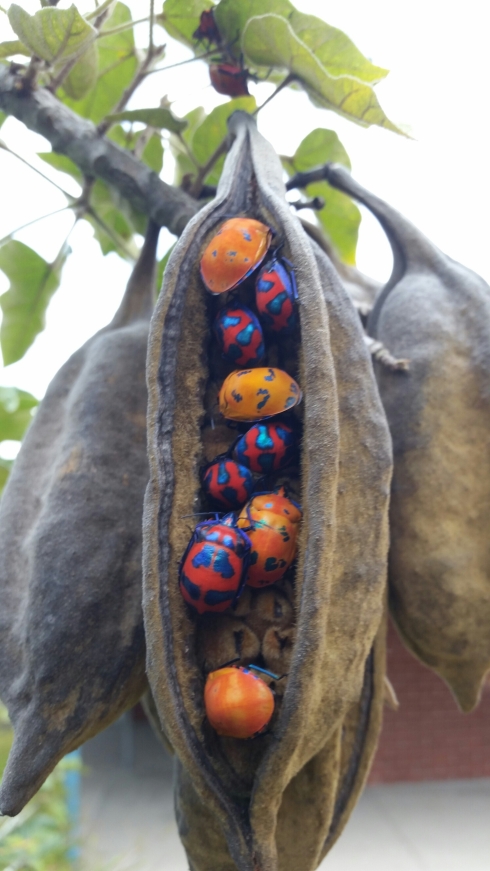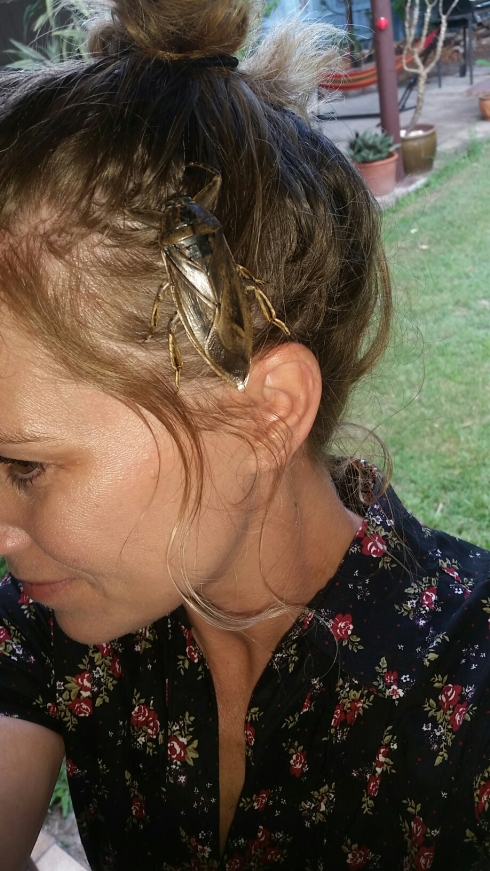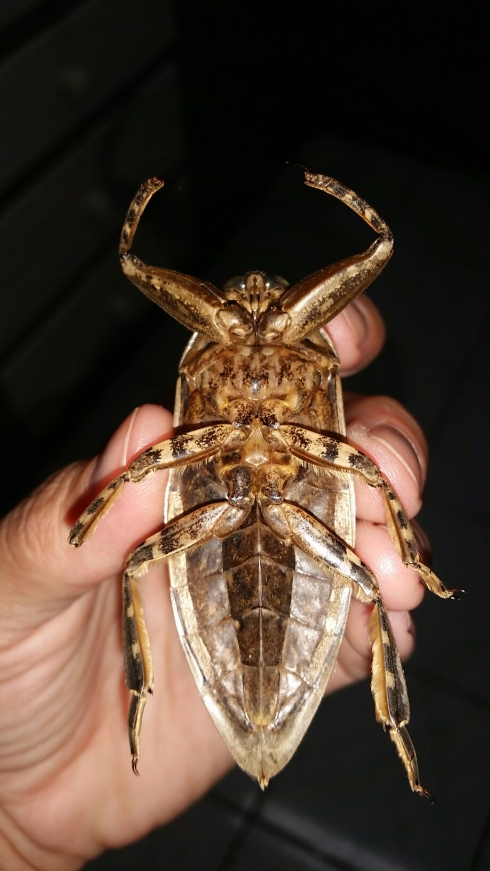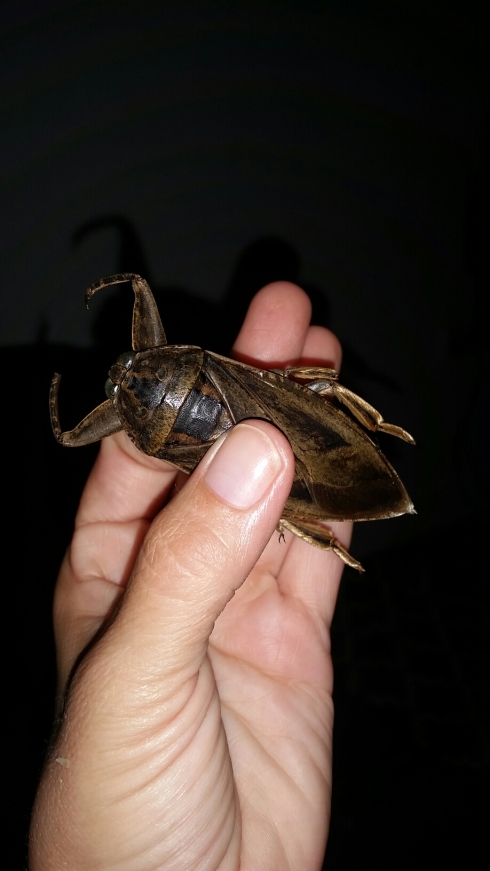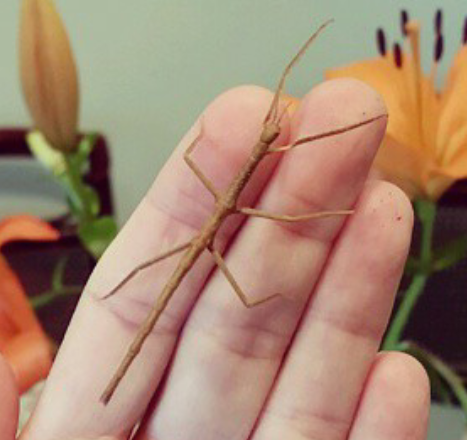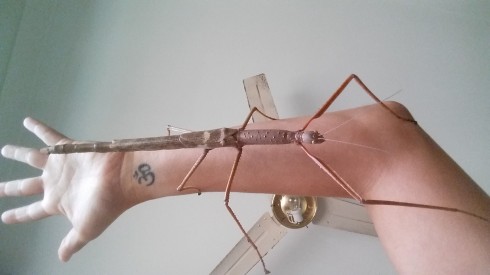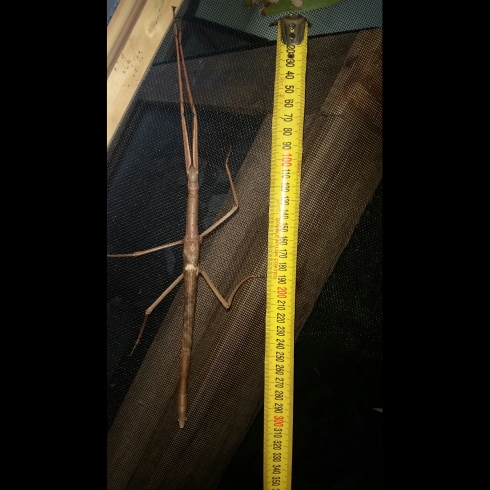Today I took the kiddos out for a bush walk to see what goodies we could find. It seemed at first it was all for naught, but then things picked up speed.
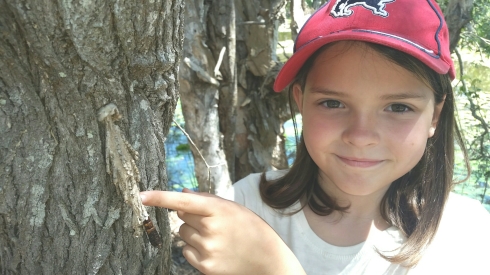
Casemoth/bagworm caterpillar and case.
We keep points whenever someone spots something, and CJ came out of the gates strong with the Casemoth caterpillar spotting and then…
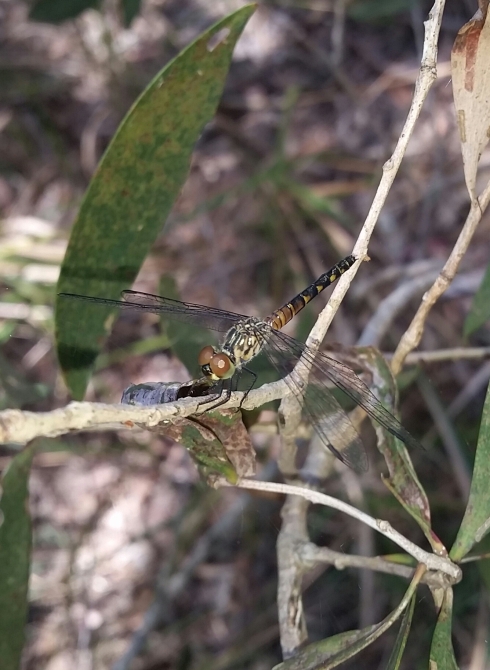
Dragonfly
this beautiful dragonfly. The kids got an eye.
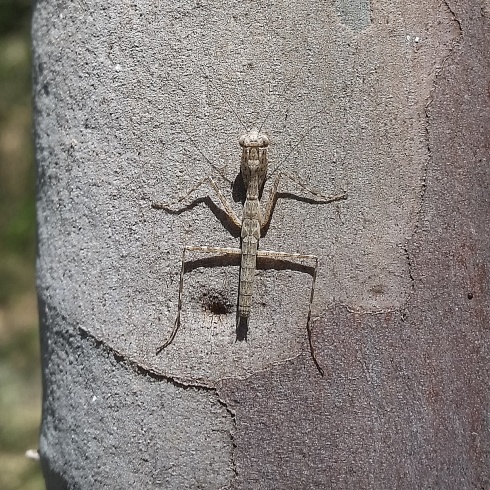
Tree-running Mantid - Ciulfina sp.
Next up we saw this beautiful Tree-running Mantid. I just love how the colour blends with the tree.
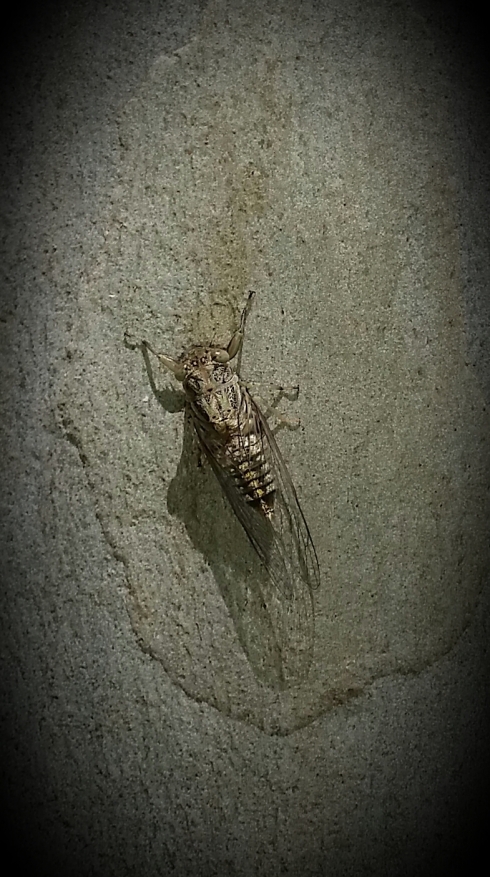
Cicada
We found this cicada moments after spotting an exoskelton. Which my brave girl put on her shirt like a broach.
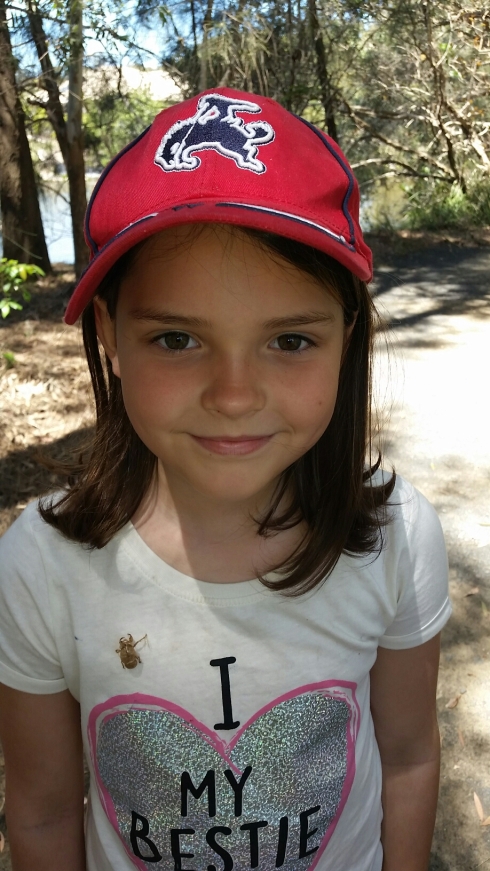
Next we found this assassin bug nymph. Such little pieces of artwork.
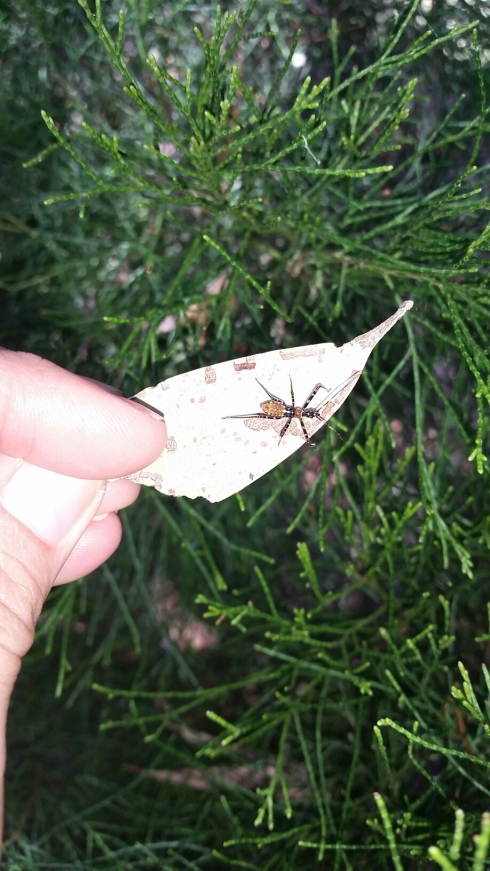
Assassin bug nymph
Some of you may have no idea what this next thing is, and I didn’t at first, but this is the secret hideaway of the Spittle bug.
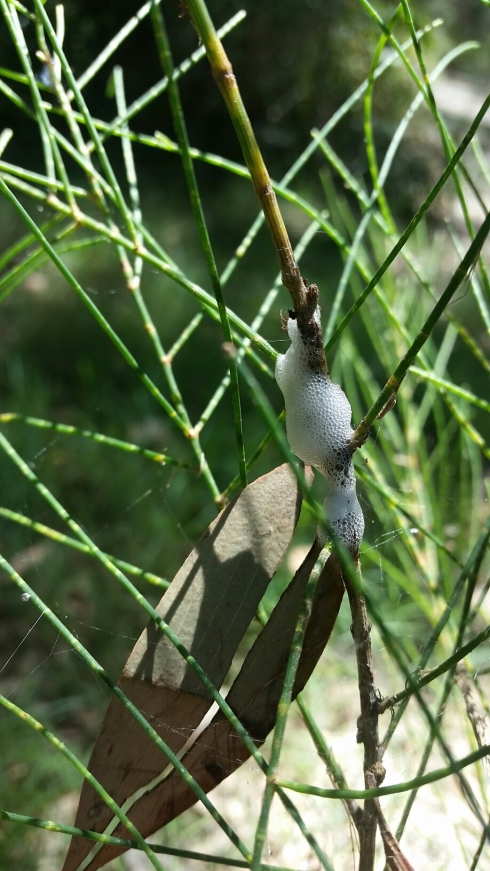
Spittle bug hideout
The Spittle bug is in the Family Aphrophorid, in the order Hemiptera. (Think Leafhopper) These nymphs form a little cubby of spittle around themselves to protect from predators and dehydration; it is theorized. I see a lot of these in pine trees.
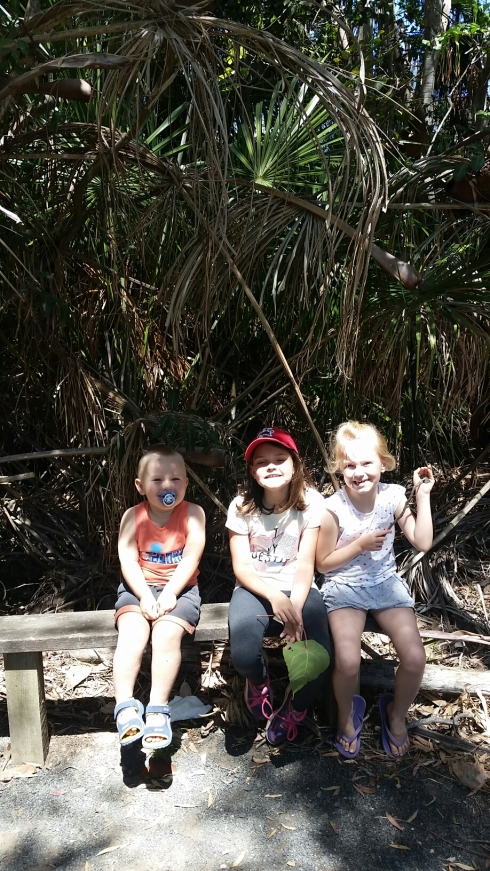
And lastly, a picture of three happy, bush-walking, insect-hunting kiddos.
Tags: assassin bug, Australian cicada, australian insects, bubbles on tree, bugs, cicada exoskeleton, cicada shell, dragonfly, entomology, entomology blog, Hemiptera, insects, Odonata, praying mantis, spittle bug
